The Victory of the Chinese People through the Lens of a Soviet Photographer
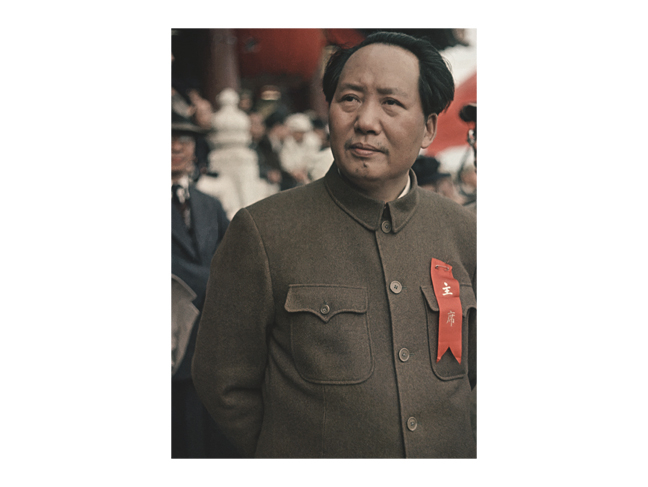
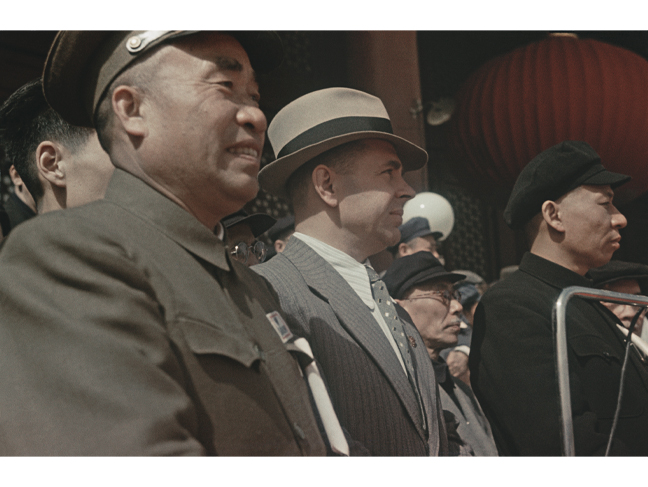
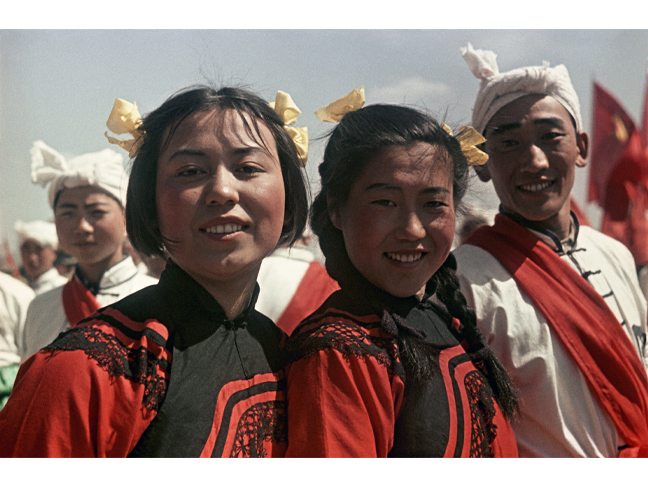
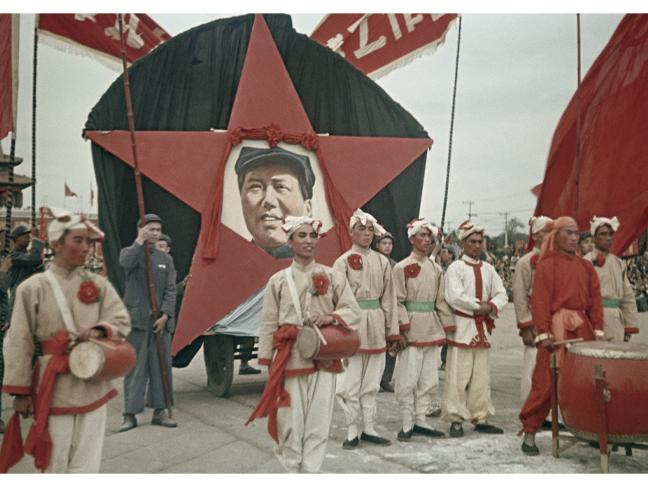
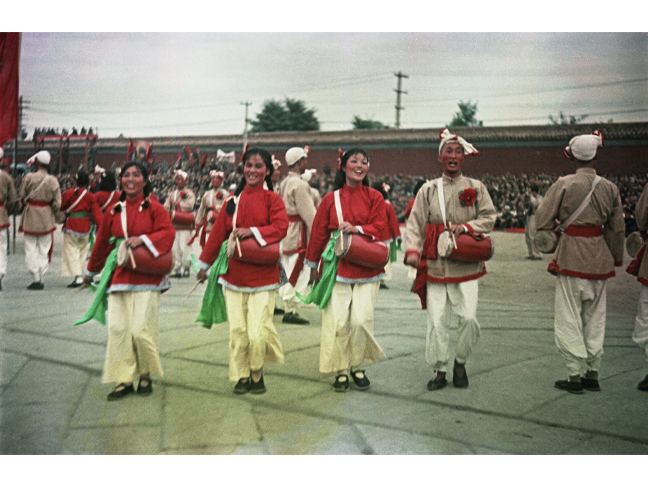
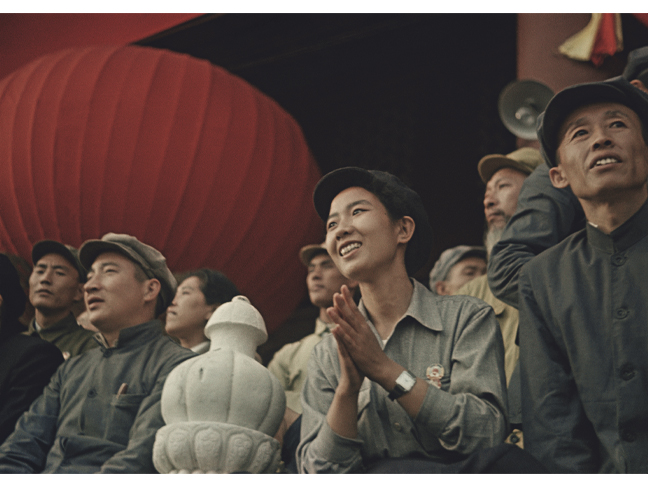
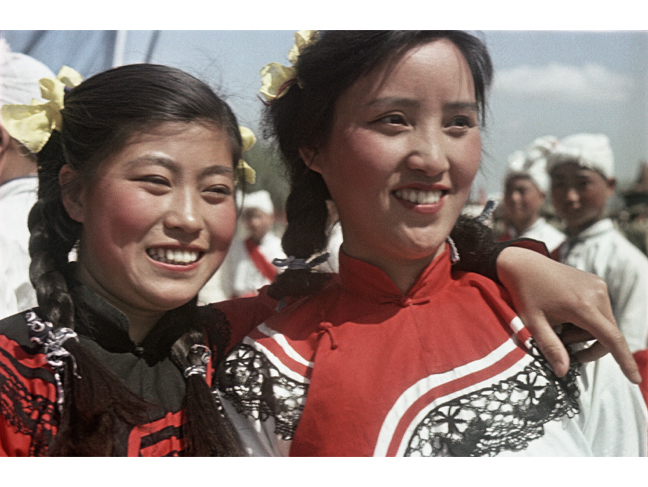

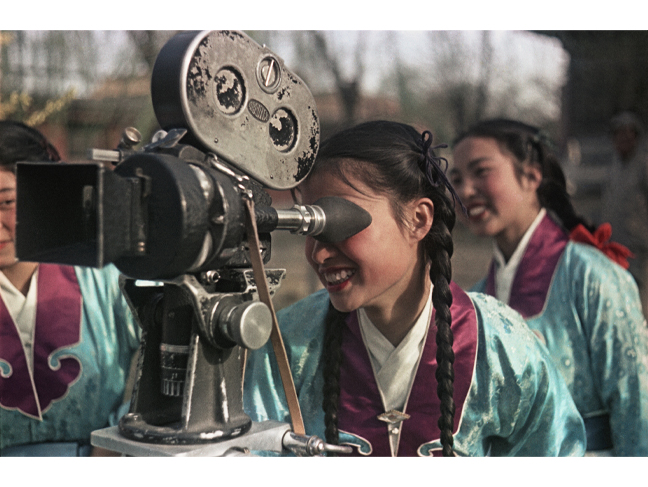

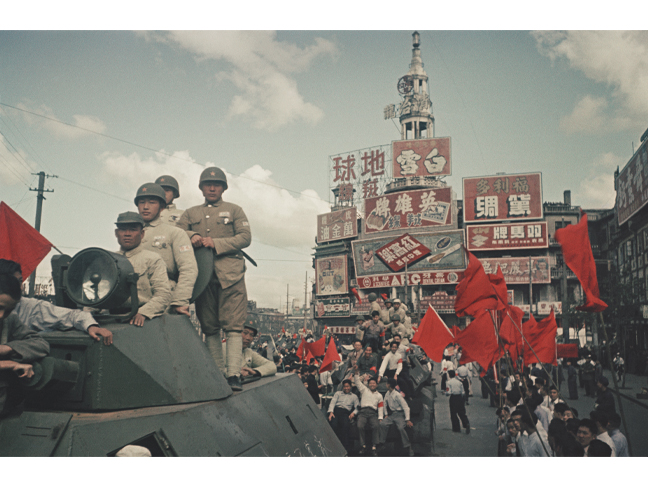
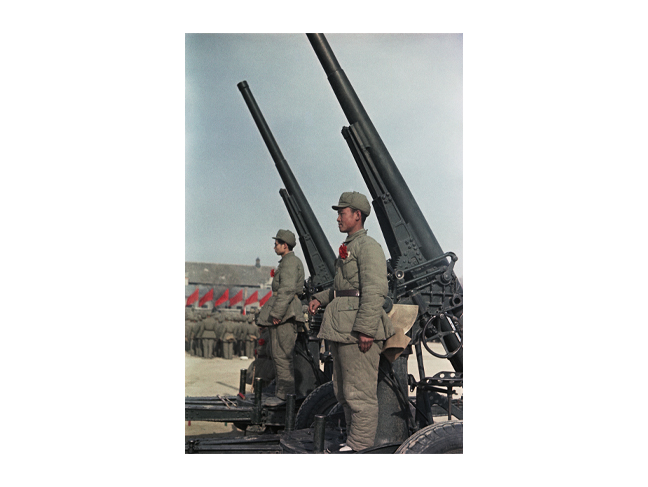

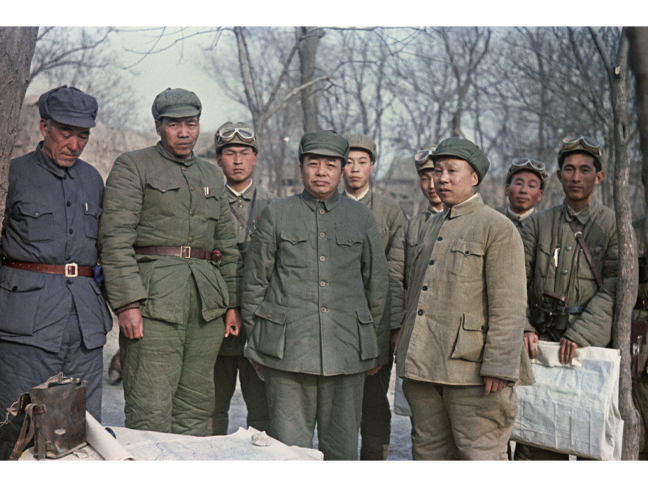
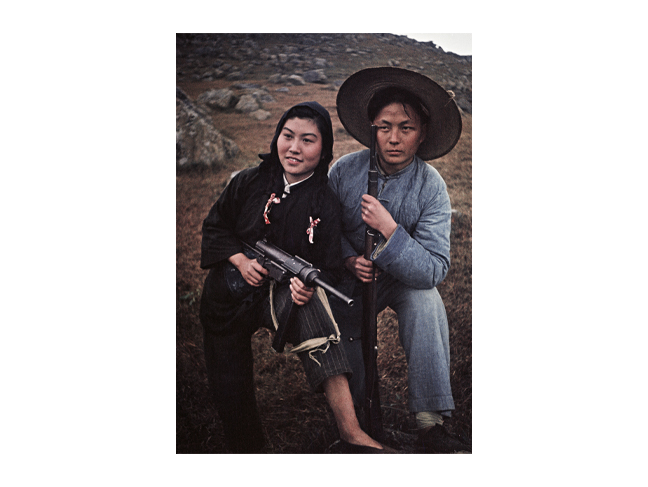
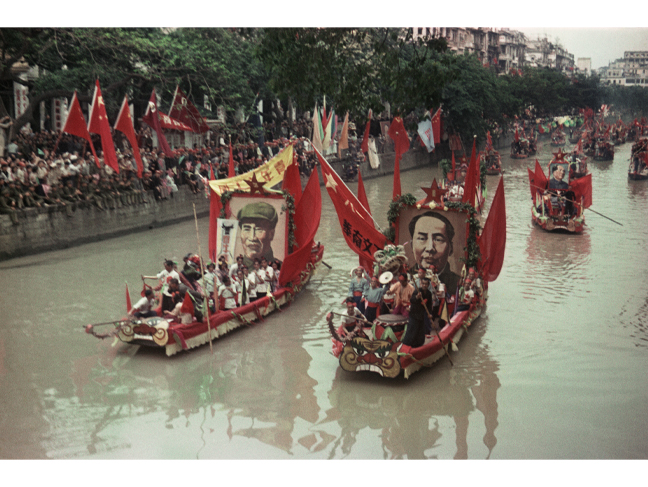

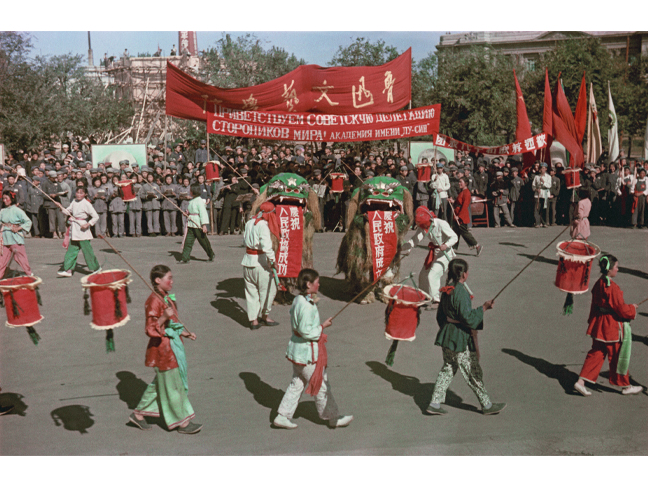
Vladislav Mikosha. Chairman of the Central Committee of the Communist Party of China and President of the Central Peoples’ Government of People’s Republic of China Mao Zedong at the tower of Tiananmen Square. People’s Republic of China, Beijing. 1949. Collection of Multimedia Art Museum, Moscow.
Vladislav Mikosha. Commander-in-chief of the People's liberation army Chzhu De and Vice President of the Central Peoples’ Government of People’s Republic of China Lu Shaoqi at the tribune of Tiananmen Square. People’s Republic of China. Beijing, 1949. Collection of Multimedia Art Museum, Moscow.
Vladislav Mikosha. Chinese girls from the folk ensemble in Tiananmen Square on the day of celebration on October 1, 1949. People’s Republic of China. 01.10.1949. Collection of Multimedia Art Museum, Moscow.
Vladislav Mikosha. Participants of the folk ensemble with the portrait of Mao Zedong in Tiananmen Square on the day of the celebration on October 1, 1949. People’s Republic of China, Beijing. 01.10.1949. Collection of Multimedia Art Museum, Moscow.
Vladislav Mikosha. The folk ensemble performs in Tiananmen Square on the day of the celebration on October 1, 1949. People’s Republic of China, Beijing. 01.10.1949. Collection of Multimedia Art Museum, Moscow.
Vladislav Mikosha. On a tribune in Tiananmen Square. People’s Republic of China, Beijing. 01.10.1949. Collection of Multimedia Art Museum, Moscow.
Vladislav Mikosha. The students of Theatre Institute in Imperial Palace – the former Emperor’s Palace. People’s Republic of China, Beijing, May 1950. Collection of Multimedia Art Museum, Moscow.
Vladislav Mikosha. The student of Theatre Institute in Imperial Palace – the former Emperor’s Palace. People’s Republic of China, Beijing, May 1950. Collection of Multimedia Art Museum, Moscow.
Vladislav Mikosha. The students of Theatre Institute with camera in the park of Imperial Palace – the former Emperor’s Palace. People’s Republic of China, Beijing, May 1949. Collection of Multimedia Art Museum, Moscow.
Vladislav Mikosha. Day of Youth on May 4 1950 in Tiananmen Square. People’s Republic of China, Beijing, 04.05.1950. Collection of Multimedia Art Museum, Moscow.
Vladislav Mikosha. Greeting of the troops of the People's Liberation Army (PLA) of China. People’s republic of China, Shanghai, 1949. Collection of Multimedia Art Museum, Moscow.
Vladislav Mikosha. The anti-aircraft gunners of the People's Liberation Army (PLA). People’s republic of China. 21.12.1949. Collection of Multimedia Art Museum, Moscow.
Vladislav Mikosha. The soldier of the People's Liberation Army (PLA) in front of the flag. People’s republic of China. 1949. Collection of Multimedia Art Museum, Moscow.
Vladislav Mikosha. Peng Dehuai, deputy commander-in-chief of the People's Liberation Army (PLA). People’s republic of China. 1949. Collection of Multimedia Art Museum, Moscow
Vladislav Mikosha. The area of the Yangtze river. Partisans. People’s republic of China. 1949. Collection of Multimedia Art Museum, Moscow.
Vladislav Mikosha. Celebrations in honor of the victory of Peoples liberation army (PLA). On the canal. People’s republic of China. Guangzhou. 1949. Collection of Multimedia Art Museum, Moscow.
Vladislav Mikosha. The railway station area. People’s republic of China. Beijing. 1949. Collection of Multimedia Art Museum, Moscow.
Vladislav Mikosha. Meeting of the Soviet delegation of peace supporters. People’s republic of China, Shenyang. 1950. Collection of Multimedia Art Museum, Moscow.
Moscow, 18.09.2021—17.10.2021
exhibition is over
Share with friends
For the press
Vladislav Mikosha
The Victory of the Chinese People through the Lens of a Soviet Photographer
The exhibition of photographs by Soviet and Russian cinematographer, photographer, screenwriter and documentary film director Vladislav Mikosha (1909—2004) is timed to coincide with a solemn occasion in the history of the People’s Republic of China — celebration of the 100th anniversary of the Communist Party of China.
Had the legendary cinematographer Vladislav Mikosha decided to choose another profession at the very beginning of his life, he would certainly have achieved success in many areas. But he believed in the predestination of his fate, in his professional destiny to be a cameraman. Mikosha was born on 8 December 1909 to a captain’s family in Saratov on the Volga, and from childhood he dreamed of becoming a sailor like his father. But for health reasons he was unable to attend the Naval school in Leningrad after getting drenched in the rain and falling ill.
In 1929 he began a course at the Camera Department of the State Technical School of Cinematography (later the All-Russian State Institute of Cinematography). He became keen on photography at the institute, combining it with the work of a cameraman. After the second year he qualified as a cameraman at Sovkinochronika and took photographs professionally for newspapers and magazines. From 1931 he worked extensively as a cameraman from Sevastopol to Vladivostok.
In 1936 he became a staff photojournalist for Izvestia newspaper. He also took pictures for other central newspapers and magazines. Mikosha was one of the first Soviet photographers to work in colour. In 1940 the first coloured series of Soviet stamps, ‘VSKhV’ (‘The All-Union Agricultural Exhibition’), was published featuring his photos. He participated in photo exhibitions in his homeland and abroad.
During the Second World War he worked as a cameraman and photojournalist. His reports were published in Pravda, the main newspaper of the Soviet Union. During his life Mikosha witnessed many historical events and captured on film the rebuilding of Warsaw and Stalingrad, the Dnieper Hydroelectric Power Station, the proclamation of the People’s Republic of China, meetings between Stalin and Mao Zedong, Khrushchev and Kennedy, as well as Nehru, Eisenhower, Castro, Tito, Gagarin…
By the decision of Joseph Stalin a Soviet film crew including Mikosha was sent to China in 1949 to work on the documentary ‘The Victory of the Chinese People’. He witnessed the significant events that predetermined the further development of the country. The People’s Liberation Army of China liberated the country’s territories in the south in the final stage of the war with the Kuomintang. But most importantly, his camera captured the historical moment when the People’s Republic of China was proclaimed on 1 October 1949. Here is how Vladislav Mikosha himself describes this portentous day: ‘Early on the morning of the first of October we found ourselves on the main square of Beijing. I got the most responsible position on the main podium by the microphone, where the great Mao Zedong would deliver his historic speech to the Chinese people. Tiananmen Square blazed under the blue sky with a red flame of banners, slogans and posters… Suddenly everyone stood up. I began filming. Mao Zedong, Zhu De, Liu Shaoqi and others appeared in the aisle. I filmed Mao’s slow approach to the microphone, a close-up of him with his hand raised. He waited a long time for the square below to calm down. I took the camera away from my eyes and saw the ‘great leader of the Chinese people’ very close to me. An incomprehensible excitement suddenly swept over me. I was shaking, just as I did on Red Square at my first meeting with Stalin.’
The photographs presented at the exhibition are united by the theme of historical events in China from 1949 to 1950. They are not just documentary records of an era — they have artistic as well as historical value. Made in the spirit of social realism, they reflect the style of that time and demonstrate the outstanding talent of the photographer in shooting: his use of contrast, imagery in the choice of subject matter, and striking angles. The pictures are filled with the atmosphere and sunlight characteristic of painting at that time. There is nothing superfluous in the frames; they are professionally accomplished and perfected, turning documentary evidence into a work of art.
Some of the negatives the author left in China were lost. The others were kept in the photographer’s personal archive and transferred to the collection of the Multimedia Art Museum, Moscow after his death.


